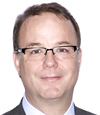Four brands, united in a global mission to bring fashion to those in need. It’s no superhero tale, it’s just another day in the life for Miki Racine Berardelli, CMO of clothing company Chico’s. Miki isn’t the kind to shy away from a challenge; in fact, she picked this job so she could juggle all the different responsibilities of a global multi-brand organization. If that doesn’t sound like someone who deserves a Rising Star award from The CMO Awards and The CMO Club, I don’t know who does.
As we spoke, I found out that this drive to balance different roles goes way beyond a little brand dancing. Miki is not just interested in enhancing the customer experience on her existing channels, but she also gives critical advice for aggressively expanding your social media and developing mobile sites and applications. Supervillains beware.
Drew: Chico’s recently teamed up with Borderfree in an effort to expand its ecommerce globally. What are the goals of the partnership, and what advice would you give to other CMOs looking to expand their ecommerce into new, international markets?
We are excited to tap Borderfree as a strategic partner to help Chico’s FAS serve international shoppers with ease and consistency. From logistics to fraud management to market insights, we look forward to leveraging the Borderfree platform to the fullest extent to grow our international presence while maintaining the core values of our brand.
Thinking globally requires a different mindset than being purely domestic. It’s important to support international efforts with the right amount of marketing support, whether it’s SEM or otherwise, to acquire customers from other countries who may or may not know your brand and product offering.
Drew: What have been the biggest challenges you have faced since taking your current position as CMO of Chico’s? How did your experience as CMO of Tory Burch prepare you to take on these challenges?
I have only been on the job for a couple of months so I haven’t necessarily faced any challenges, but this role requires Digital Commerce and Marketing oversight of four very distinct brands across multiple channels, product categories, touch-points and countries. Our brands include Chico’s, White House Black Market, Soma Intimates and Boston Proper. The experience of working in a multi-brand organization will challenge me, one of the main reasons I decided to join Chico’s FAS.
I will be forever grateful for the rewarding experience I had at Tory Burch during a chapter of such exciting growth in the brand and change across the landscape. Everything I learned there prepared me for my new role.
Drew: A lot of marketers are talking about employee advocacy – is this a priority for you and if so how are you going about it? If not, perhaps you could talk about how you as a marketer have had an impact on the whole customer experience
Whether employee advocacy makes sense for a brand or business really depends on the company and culture within. While we don’t currently have a formal program in place, Chico’s FAS is comprised of four strong brands on an amazing campus with inspired and dedicated employees. I believe we have opportunity for our employees to share that, digitally and traditionally.
Drew: What role does social media play in your marketing mix? Are there any platforms that are working better for your brand than others?
I have always been a strong believer in social media. We have a strong portfolio with presence on Facebook, Twitter, Pinterest, Google+, Instagram and Youtube. We also have strong blogger relationships that are important to the mix. We use each platform differently and are exploring new ones as well as new ways to create and share content to tell our stories.
Drew: How are you being “creative” in your current role and how has that helped you?
I have always tried to balance the “art” with the “science.” I believe brands are most successful when they strike right down the middle. I’m excited about the creative opportunities here, creating a seamless experience for our customer, and continually enhancing our digital presence and marketing touch-points.
Drew: Looking ahead to 2015, what’s on your priority list?
Learning! If I had to state the top three areas of focus based on my “fresh eyes,” the would be: customer experience across all channels, mobile sites and applications, and helping to set us up for the future while we continue to build four successful global brands.

